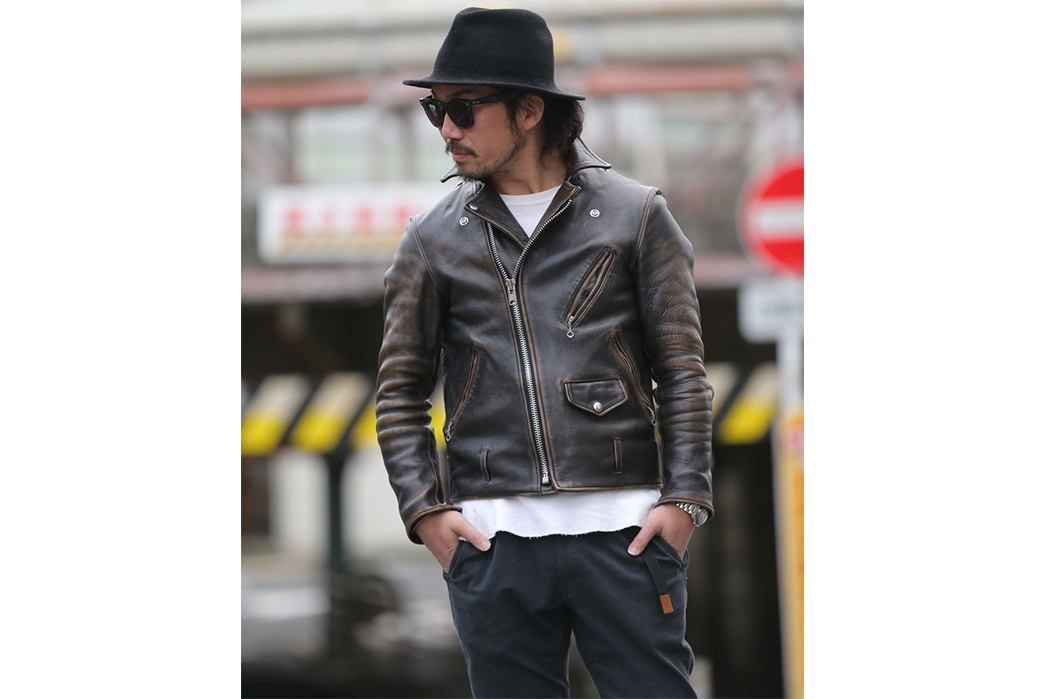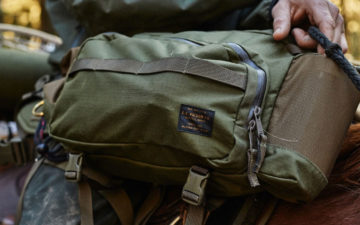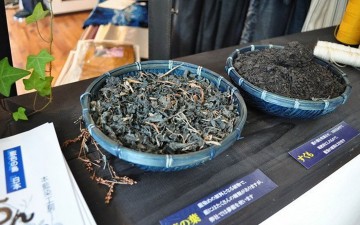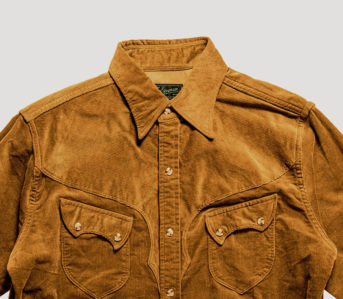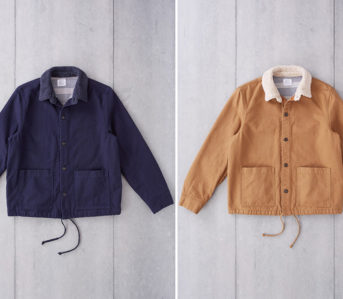If you’ve been paying attention and reading our articles, you’ve likely heard the term “teacore leather” thrown around. Many of our favorite jackets and boots hold the distinction of being made from teacore leather, but what exactly makes something “teacore?”
More than just a buzz word, a true teacore emulates the grain, feel, and nuance of classic leathers; but beware imitations!
What is Teacore?
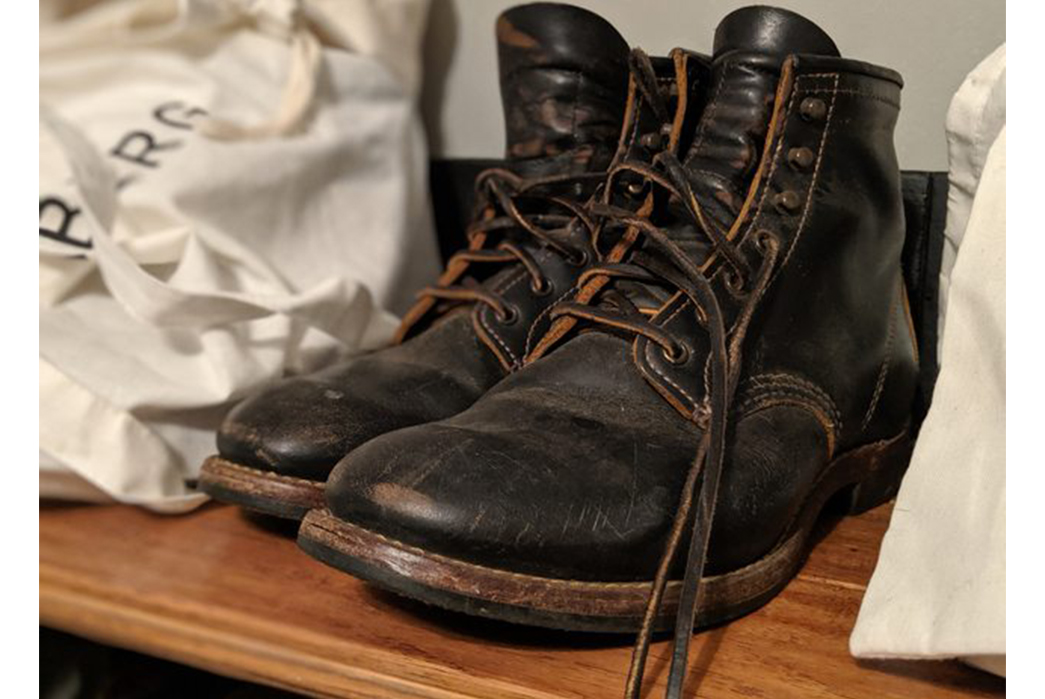
Red Wing 9060 Black Klondike. Image via Reddit.
Teacore leather is a highly prized style of leather that emulates the nuanced break-in of vintage leather by in turn emulating older styles of tanning and finishing leathers. What makes a leather teacore is that, as you wear away the outermost layer of dye or pigment, you begin to see a new layer of color, usually a light brown, hearkening back to a time when leathers were almost always veg-tanned. In very high-quality modern leathers, this innermost layer of color will likewise be veg-tanned, which remains one of the lengthiest and costliest ways to tan a hide.
Teacore leather, which we see most often in cow and horsehide, is a return to a more thoughtful and conscientious style of tanning, which, because of its higher cost, often entails a more fair labor situation for workers, a lessened environmental impact, and an all around more interesting product.
Tanning
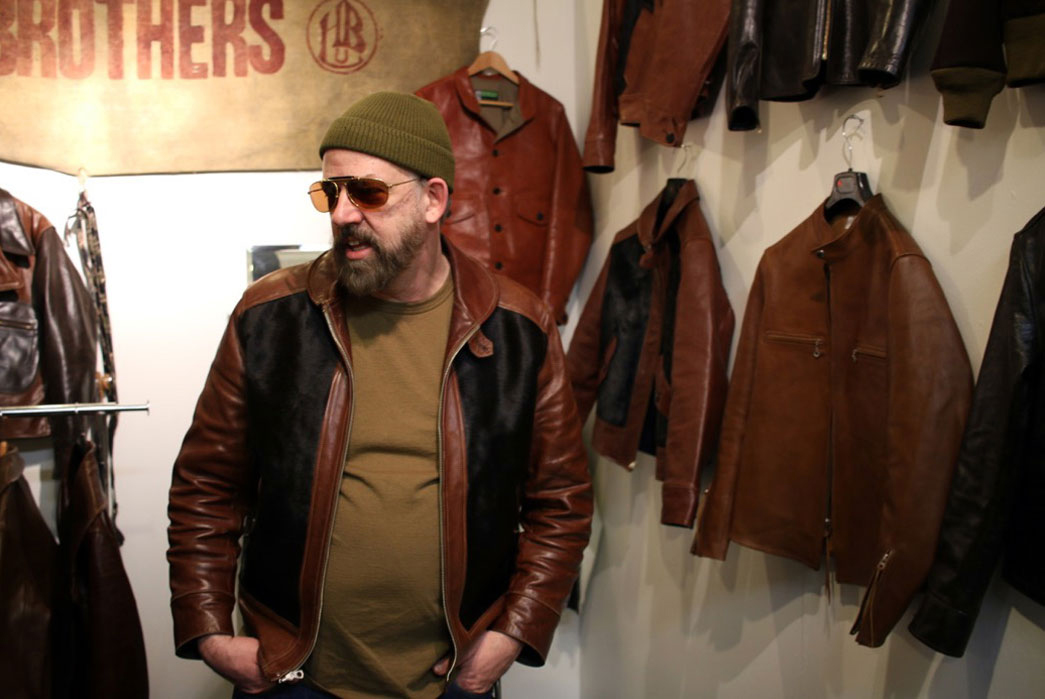
David Himel of Himel Bros. Image via Heddels.
In order to get the requisite leather information, I called up Dave Himel, of renowned leather brand, Himel Bros. (The majority of the information in this article comes from our conversation.) He generously broke down the three main ways that leather is tanned: veg-tanning, chrome tanning, and white tanning.
Veg-tanning uses tree barks as the source of tannins, and hides soak in this bark soup for extremely long periods of time; anywhere from a week to a year. The most archaic of the aforementioned methods, veg-tan makes for that lighter shade under the pigment of a true teacore piece and form the most essential building block of these treasured leathers. These rich, light tones are highly influenced by a number of factors:
“One is the type of vegetable tannin, because there’s a couple of different parts,” Dave explained, “Like oak, chestnut, and mimosa. People use different combinations of different trees to get different outcomes.”
This artisanal, delicate approach differs greatly from chrome tanning, which is probably the most widespread and cheapest way to tan hides. Chrome tanning, which uses chromium salts, gets the job done in a manner of hours, but leaves the leather with a grayish blue color. Chrome tanning was invented in 1858, but didn’t go fully mainstream in American leathers until after World War II. Now this tanning accounts for about 85% of global tanning.
Chrome tanned leathers require a great deal of finishing to hide their slightly sickly blue color. “You’re not going to see it on the surface or on the suede, you’re not going to see it on the split side. So you’ll see a lot of motorcycle jackets from the fifties and sixties, when they started moving over to chrome tanning, and you’ll see a lot of those One Star jackets, when the paint starts scratching off, it’s got a blue-gray color, as opposed to a warm, fuzzy ground coat.”
Real teacore isn’t just about having two layers of color on your jacket, it’s about breaking down the outer, darker color and finding that rich, light tan underneath. But just because the ground coat of your teacore leather looks brown, doesn’t necessarily mean it’s genuine veg-tan under there. Because there’s a growing market for teacore products, some tanneries will take their blue chrome-tanned hides and then simply dye them brown.
Finishing
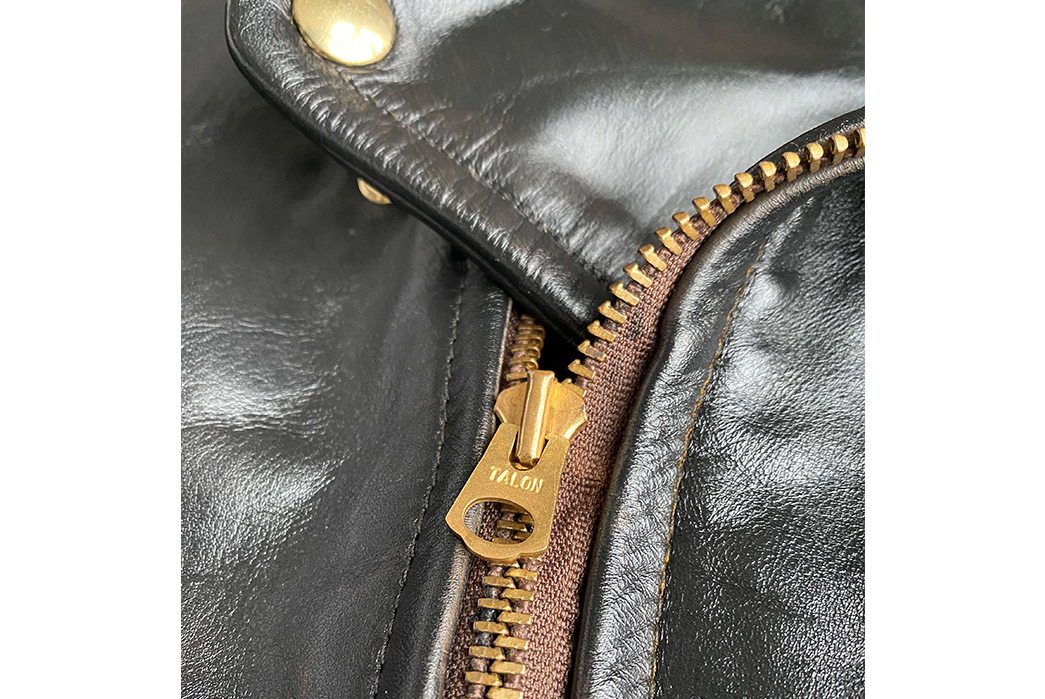
Closeup of Real McCoy’s Buco. Image via Fedora Lounge.
The final step in the tanning process is the finish. This is what gives the jacket its outward appearance and can be achieved in one of two ways (usually): aniline dye and pigment. Semi-aniline dyes, as Dave explained, are a spray-on due that partially penetrates the surface of the leather but slowly wears away—very slowly. Aniline goes well with a veg-tan because it showcases the grain and blemishes of the underlying leather, while temporarily giving it a darker hue. Usually, but not always, brown jackets use aniline dyes, while colored and black jackets use pigment, which is, essentially, paint.
Pigment dyeing might sound like the less renowned of the two finishes, but it all depends on the brand. The stigma against pigment dyeing is that most mass-market brands request the cheapest finish available, whereas brands like Himel Bros. and The Real McCoy’s have the resources to custom-make their leathers, and use softer finishes. Lower-end brands use hardening agents in their pigment dye so that it’s nearly impossible to remove, but a better finished pigment dye will use softening agents to do the opposite.
Dave elaborates, “For the vintage guys, that’s what they prefer. So, for the really big-end brands like myself, we can afford to customize and request custom pigment finishes that wear off a little bit and show the leather underneath. Whereas, for a commercial brand, they don’t want the leather to wear off, they want jackets to look new until the end of time.”
Past and Present of Leather
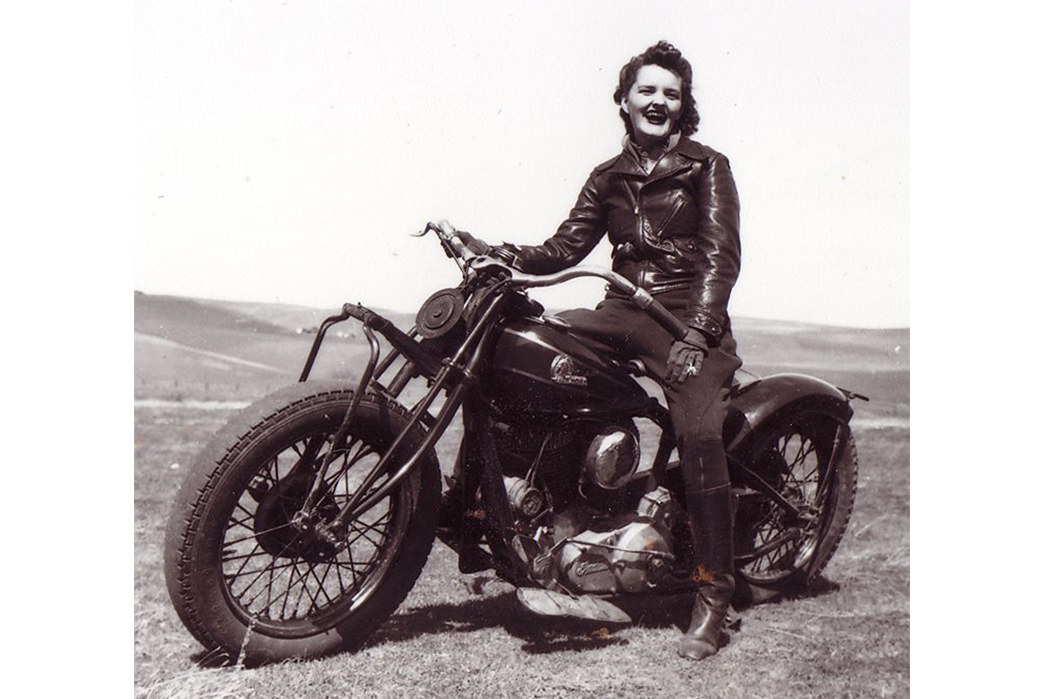
Unknown female rider. Image via San Joaquin Riders.
Prior to World War II, leather jackets were made to last decades and brands competed with one another to make the most durable, hard-wearing product to attract customers. With the advent of a consumer economy, after World War II, people began shopping more like they do today, seasonally and by trend. In this atmosphere, which led to our modern era of fast fashion, brands began lowering quality and cost to compete with one another and get more product out faster.
Chrome tanning, which had been considered an inferior tanning process, despite its speed, became widely used and people were able to bring the cost way down. The same, unfortunately, is true today, and often at the expense of the environment and the people making the product.
As Dave explains, “If you chrome tan in China, you buy leather for a dollar a foot. If you veg-tan in Japan, you’re looking at ten dollars a foot. A huge difference. So part of spending all that extra money, buying very high-quality leathers, you’re paying for environmental costs of treating waste water, using barks that are non-toxic, paying wages.”
Brands with the ability to produce real teacore leather aren’t just doing so to emulate vintage patina (though that’s much sought after) their slower pace of production allows for a better end product that causes less damage to the natural world and at a price point that adequately compensates its workforce. There are imitators using techniques like chrome/veg re-tan to sneak their inferior leather into the teacore conversation, but the proof is usually in the price. If it costs a fair bit and comes from a reputable brand, you can probably trust it and trust that those old school methods are doing their part to lessen their negative impact on the world and increase their positive output in fashion.
Where to Find Teacore
Himel Bros.
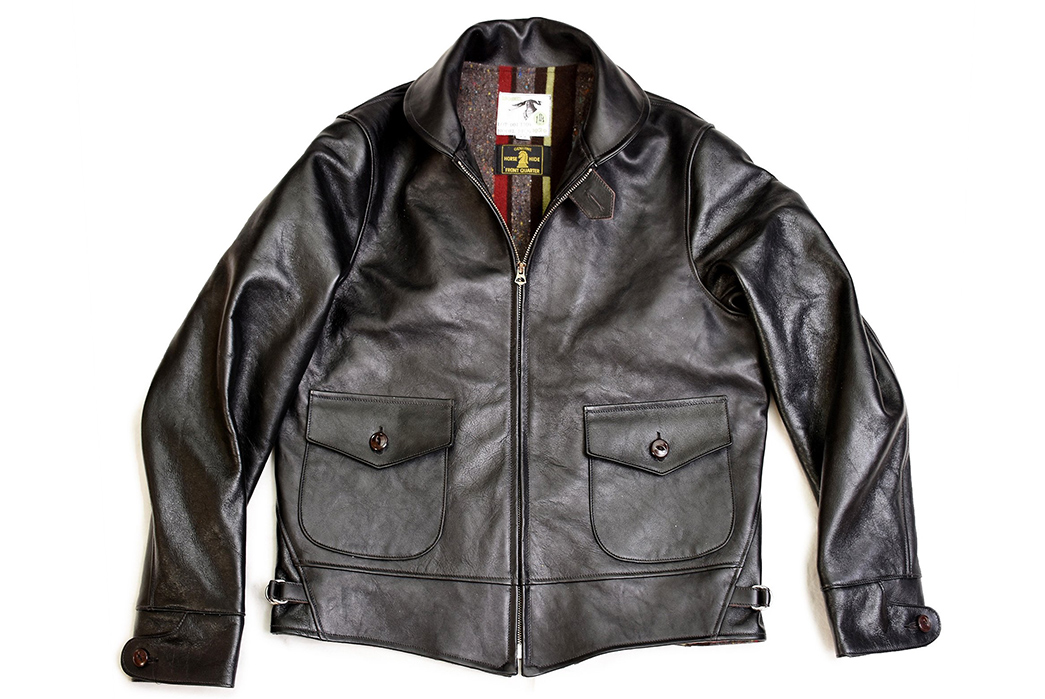
Himel Bros Heron Jacket. Image via Himel Bros.
We first have to plug Himel Bros. for Dave’s considerable help with this article – as well for their unprecedented transparency when it comes to their leather. Every product on their site gives an extremely in-depth explanation of the tanning and finishing processes and there’s no doubt about how excellently their products will wear in.
Head over to Himel Bros to see their full collection.
The Real McCoy’s
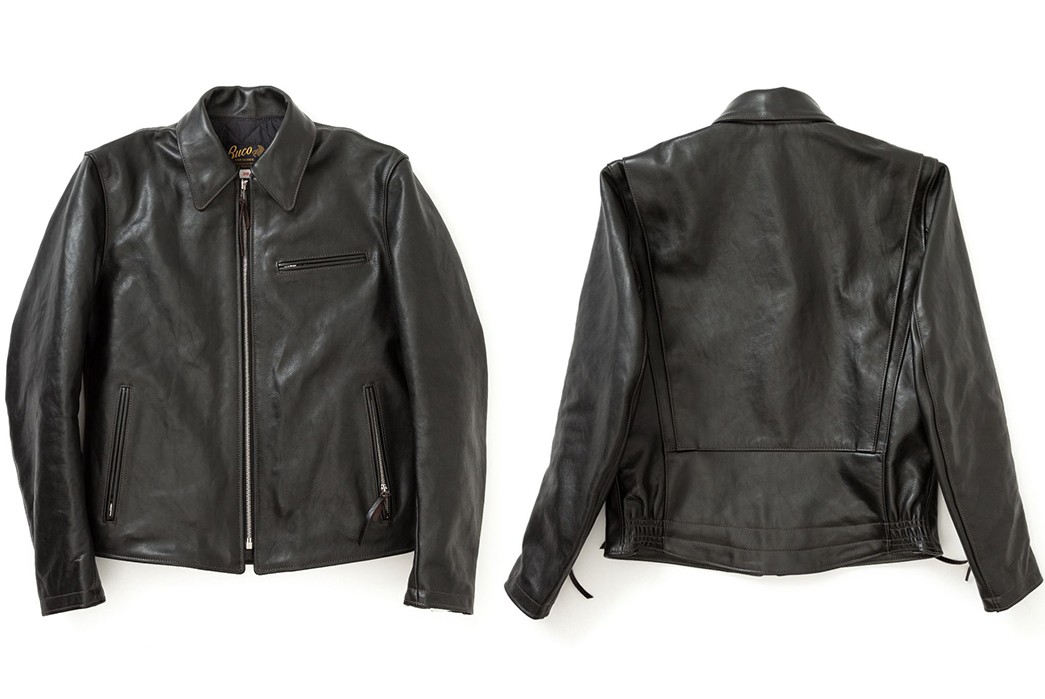
The Real McCoy’s Buco J-25 horsehide jacket.
One of the most famous teacore-makers around, The Real McCoy’s is sometimes credited as having coined the term “teacore” and though this is hard to prove, they were certainly in the vanguard of reproduction brands to re-invigorate these timeless techniques.
Gorgeous repro pieces, they can be hard to find, but they have a pretty full selection over at Lost & Found.
Fine Creek Leathers
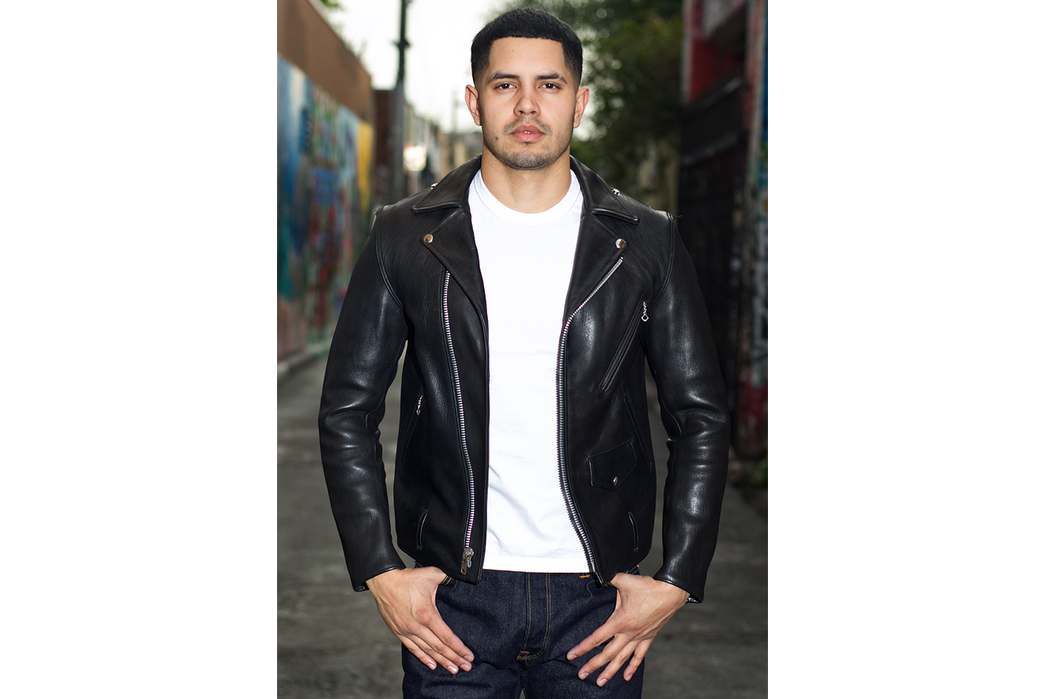
Fine Creek Leon. Image via Self Edge.
In comparison with these two elder statesman brands, Fine Creek Leathers might seem something like an upstart. But their teacore horsehides have rapidly gained popularity for their quick break-in and gorgeous repro detailing.
Available at Self Edge.

